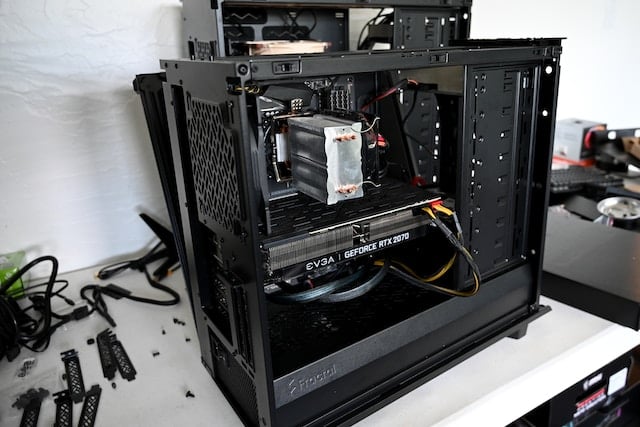
Building your PC allows you to handpick components that best suit your needs and can often save you money. The key is knowing what parts are essential and what options you have.
At the heart of every computer, the CPU executes instructions and dictates tasks to other components. Look for a CPU with a high gigahertz (GHz) rating for maximum performance.
CPU
Your computer’s brain is the central processing unit (CPU). It processes user input while you’re surfing the web, creating documents, and playing games. The CPU also interprets instructions from software programs.
The CPU comprises billions of tiny transistors placed on a small computer chip. As a result, it generates a lot of heat and needs to be cooled with a heat sink and fan located on or near the motherboard.
Modern processors have multiple cores that work independently from one another. The number of seats indicates how powerful a CPU by Samsung parts is. For example, a quad-core chip can handle four separate computing tasks simultaneously. Look for a CPU with multiple cores built on the same microarchitecture and clock speed for the best performance.
Motherboard
The motherboard is the central backbone of your computer hardware. It connects all other modules and provides expansion slots to install additional devices/interfaces.
CPU – The central processing unit works with the motherboard to process input from your keyboard and mouse. It also handles other computer functions and helps keep your system running smoothly.
RAM – The memory on your motherboard is where you can add extra or replace the random access memory. This memory is used for temporary data storage and helps speed up your computer’s responsiveness.
Other components like your graphics card and sound cards attach to the motherboard through various ports and connectors. The motherboard will also feature a cooling fan to help reduce excess heat from the many connected computer parts.
RAM
RAM is where your computer keeps the data it uses immediately handy. It’s why your PC can open files and start running programs seemingly instantaneously: it doesn’t have to retrieve information from a hard disk every time.
RAM comes in easily upgradeable modules about the size of a stick of gum that plugs into a slot on your motherboard. Look for mobos that support dual-channel RAM, which allows the chips to communicate with your processor at lightning-fast speeds.
For most applications, 8GB of RAM should be sufficient, although modern games require at least 16GB to run smoothly. If you use your computer for photo and video editing, you’ll want more than 32GB of RAM. The quickest way to speed up your PC is by upgrading its memory.
Storage
Storage is where your applications and operating system live for the long term. It can come in the form of an SSD (which is much faster and quieter) or a standard hard disk drive. The proper storage solution will depend on how you use your PC, but we recommend a small SSD for the operating system and most frequently used files and a larger HDD for everything else.
You’ll also want a USB flash drive to install the OS. Other tools on hand include:
- A movable light source (to help illuminate your case’s dark nooks and crannies).
- Zip ties (to tie cables together).
- Scissors. You’ll
It would help if you had these to keep your build organized and tidy. You should also have a clean, uncarpeted workspace to work on.
Power Supply Unit
A power supply, aka PSU, is integral to any computer. It turns electrical current from the wall into low-voltage DC (direct current) that each component needs to operate.
The power supply has multiple outputs connecting to different computer parts. Typically, the incoming voltage is regulated by a transformer and then passes through a rectifier before reaching the motherboard.
To protect your PSU and other components from voltage spikes, consider investing in a UPS (uninterruptible power supply). You can also take additional precautions by plugging your rig into a surge protector or unplugging it during long periods of inactivity. For safety reasons, never open your power supply unit. The unit is usually located near the power cord plugs on the back of the case.
Interesting Related Article: “How to choose PC parts for building a gaming setup“

